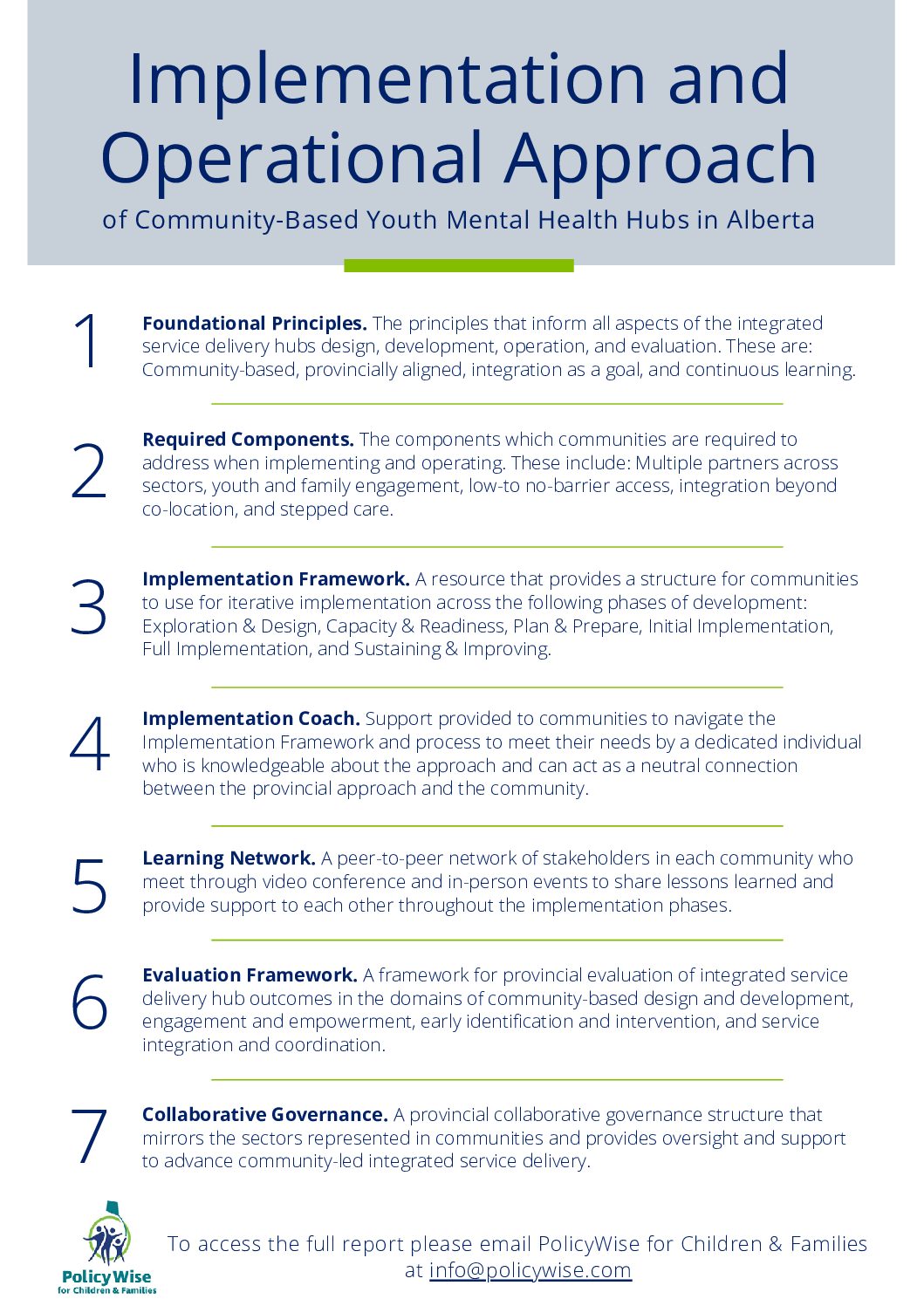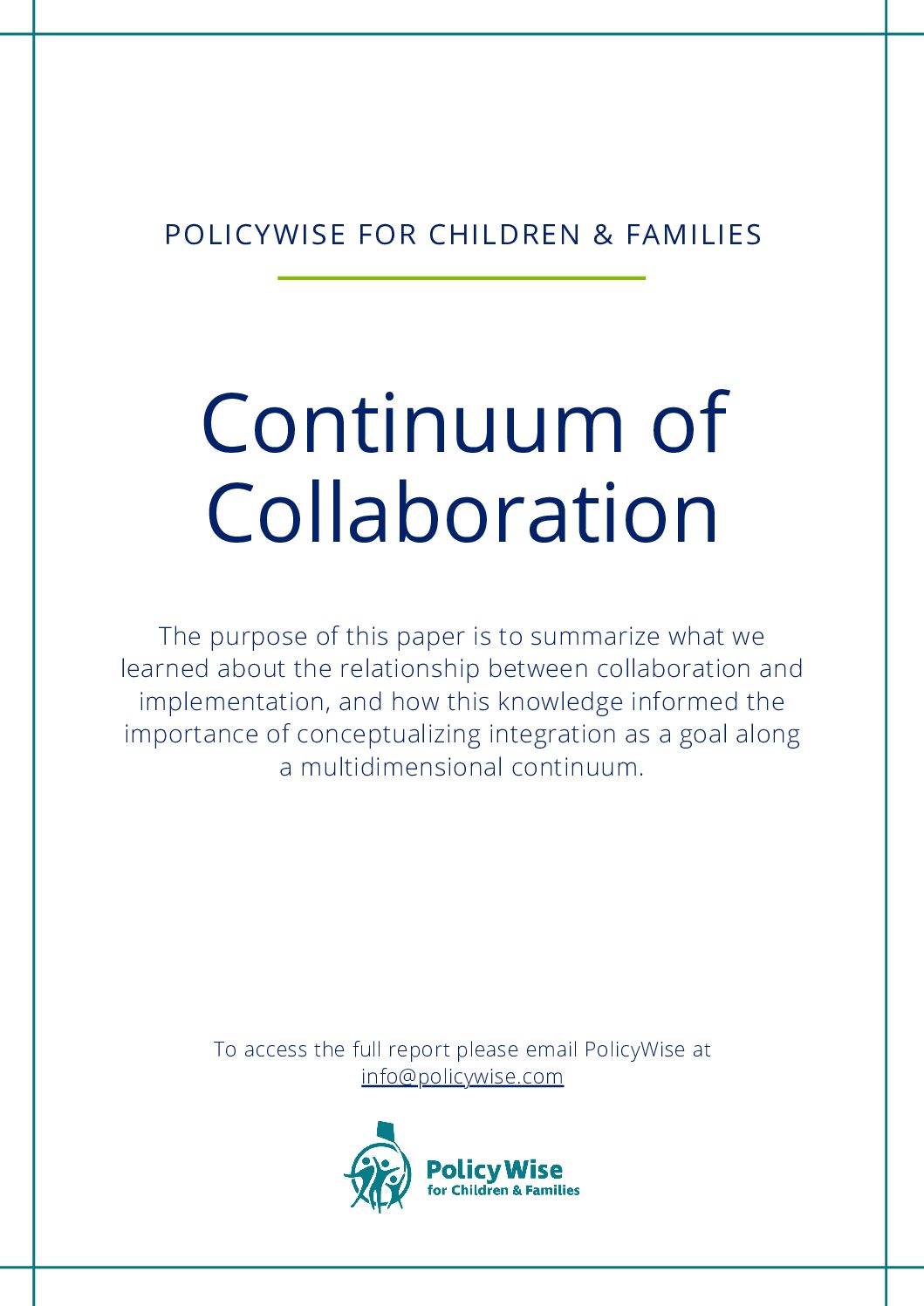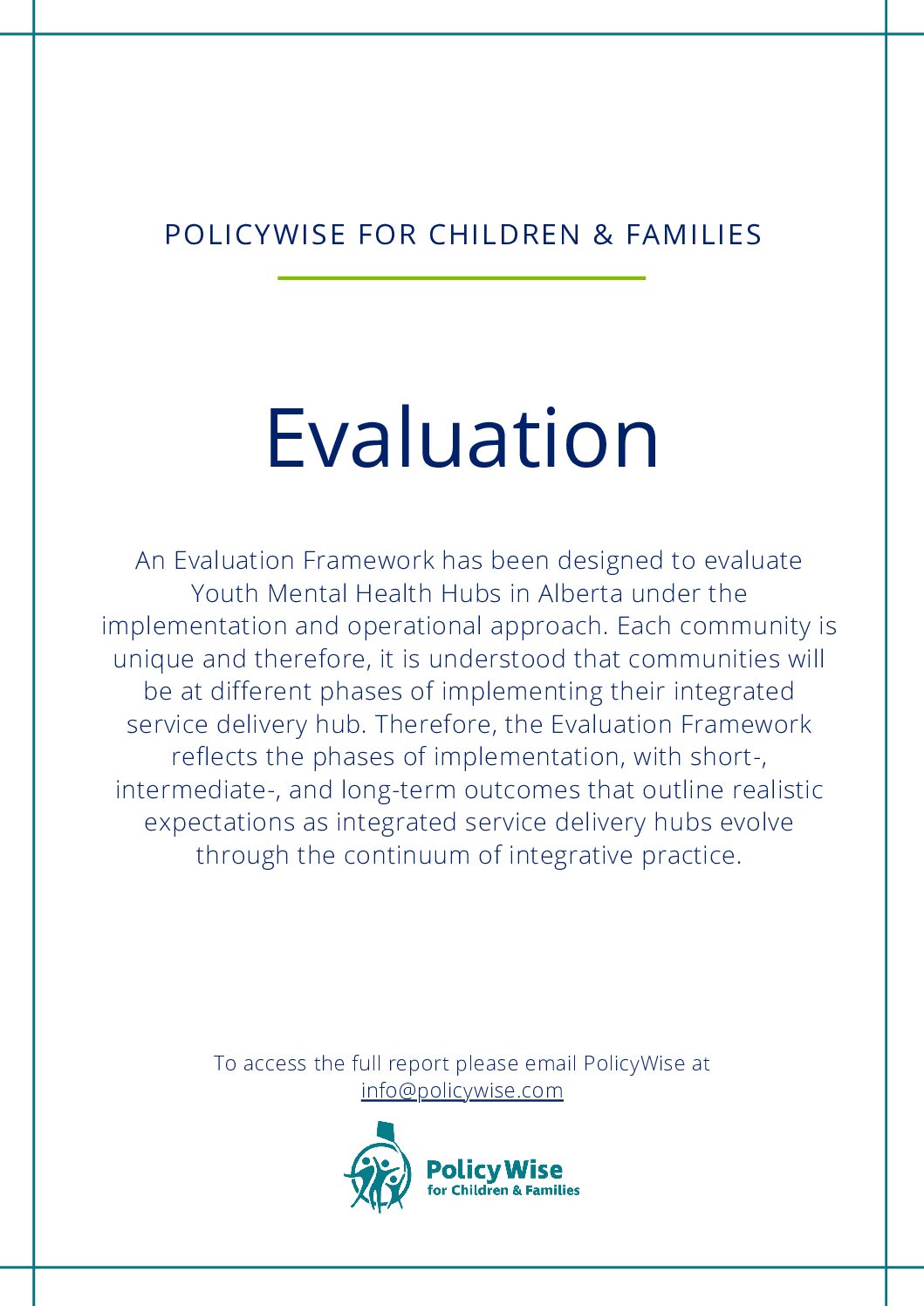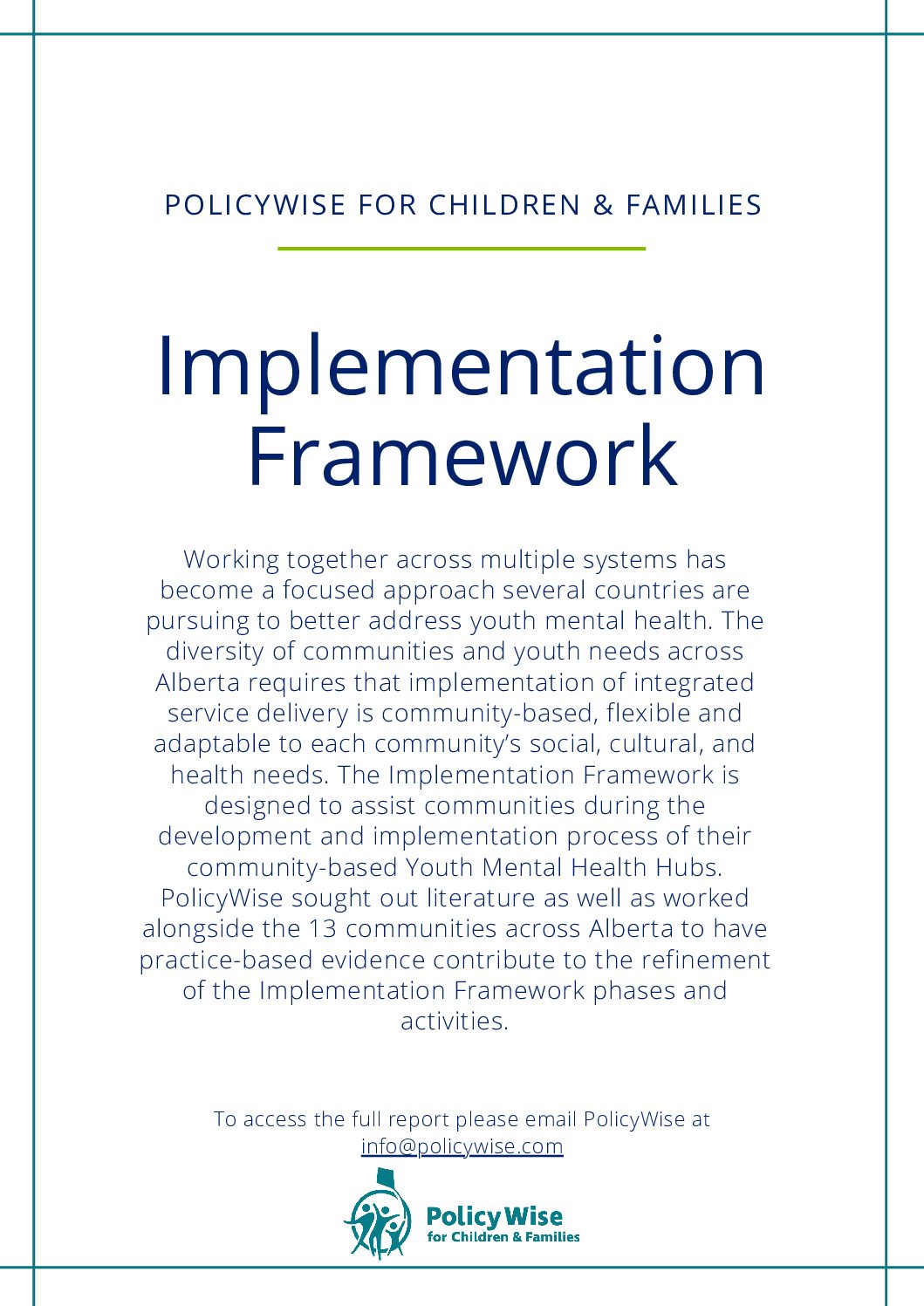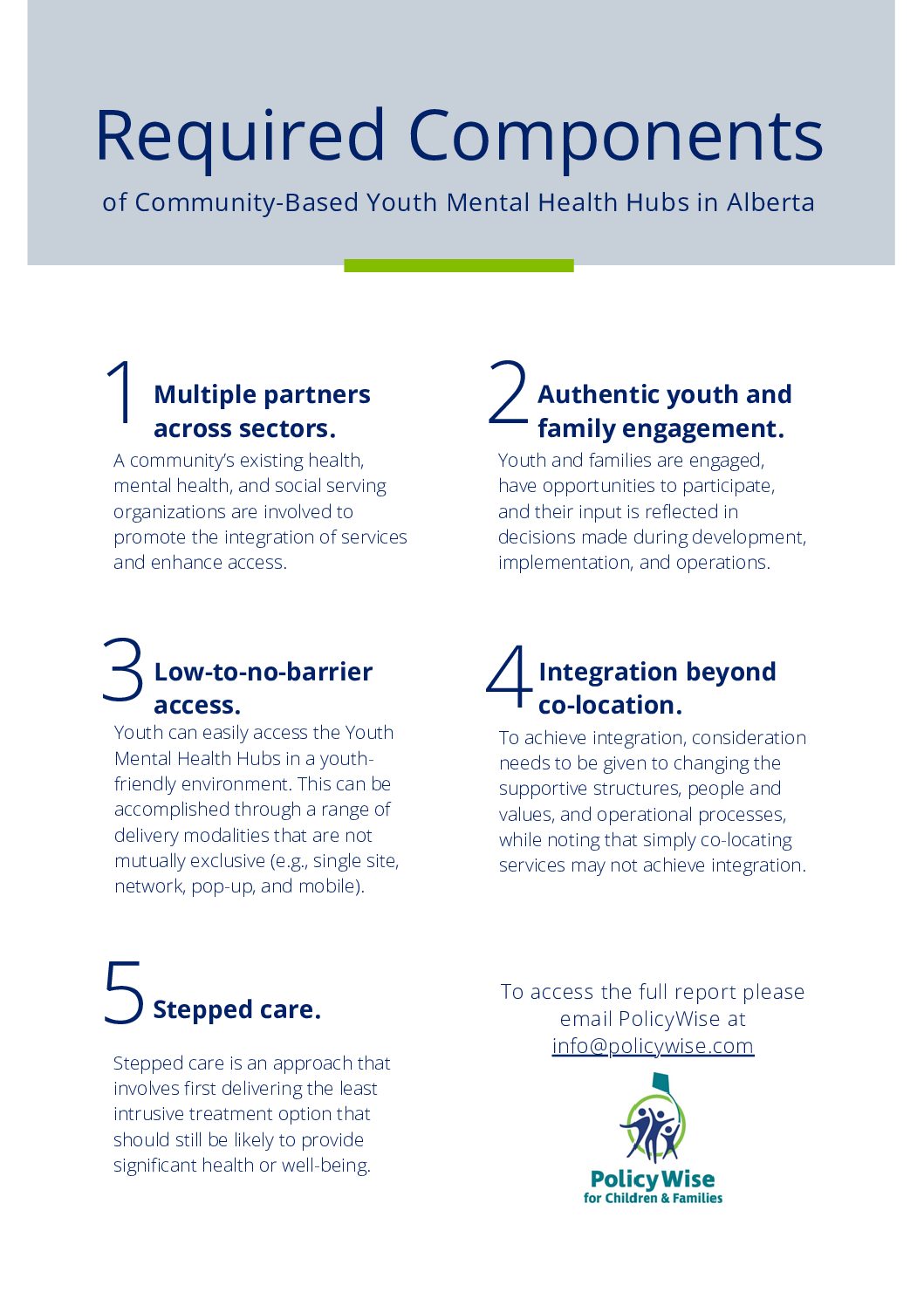What are Youth Mental Health HUBS?
The Youth Mental Health Hubs (Hubs) were launched by the Alberta government in 2017. The goal was to improve mental health care for youth aged 11-24 years.
The Hubs:
- Create local solutions
- Engage and empower youth
- Promote early identification and intervention
- Integrate service delivery
How Have the Hubs Been Developed, Implemented, & Evaluated?
PolicyWise is proud to be a partner on the initiative. Specifically, we’ve helped to develop, implement, and evaluate the Hubs. Check out the linked resources below for details about our implementation and evaluation approaches. We’ve also summarized the required components of the Hubs initiatives.
- Downloads
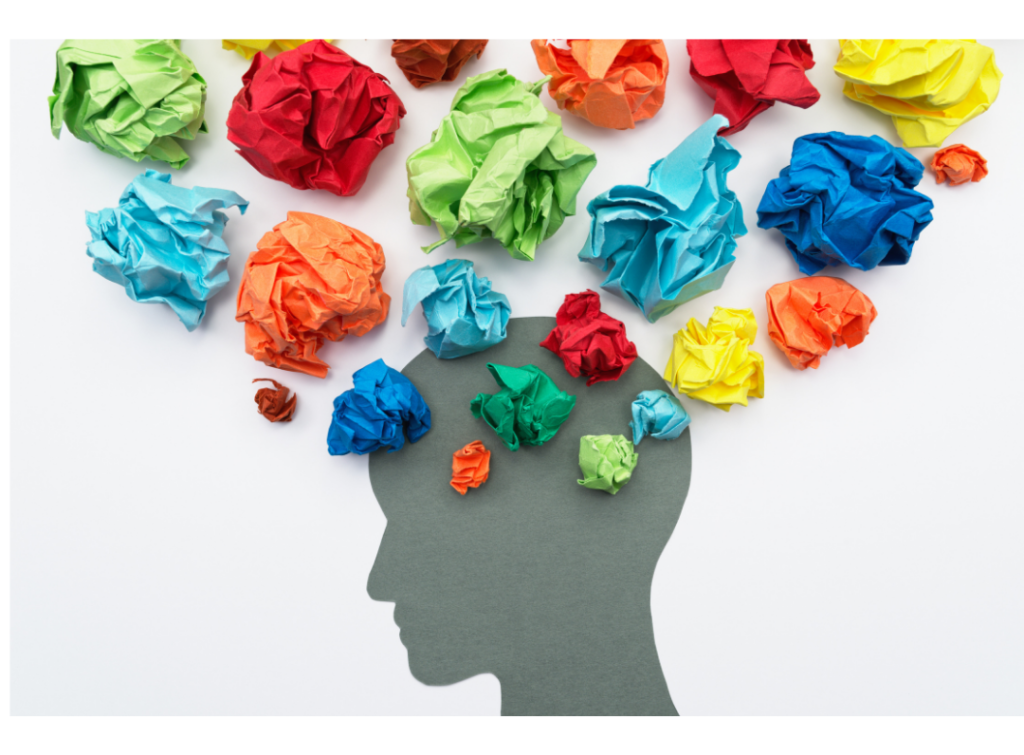
- Downloads
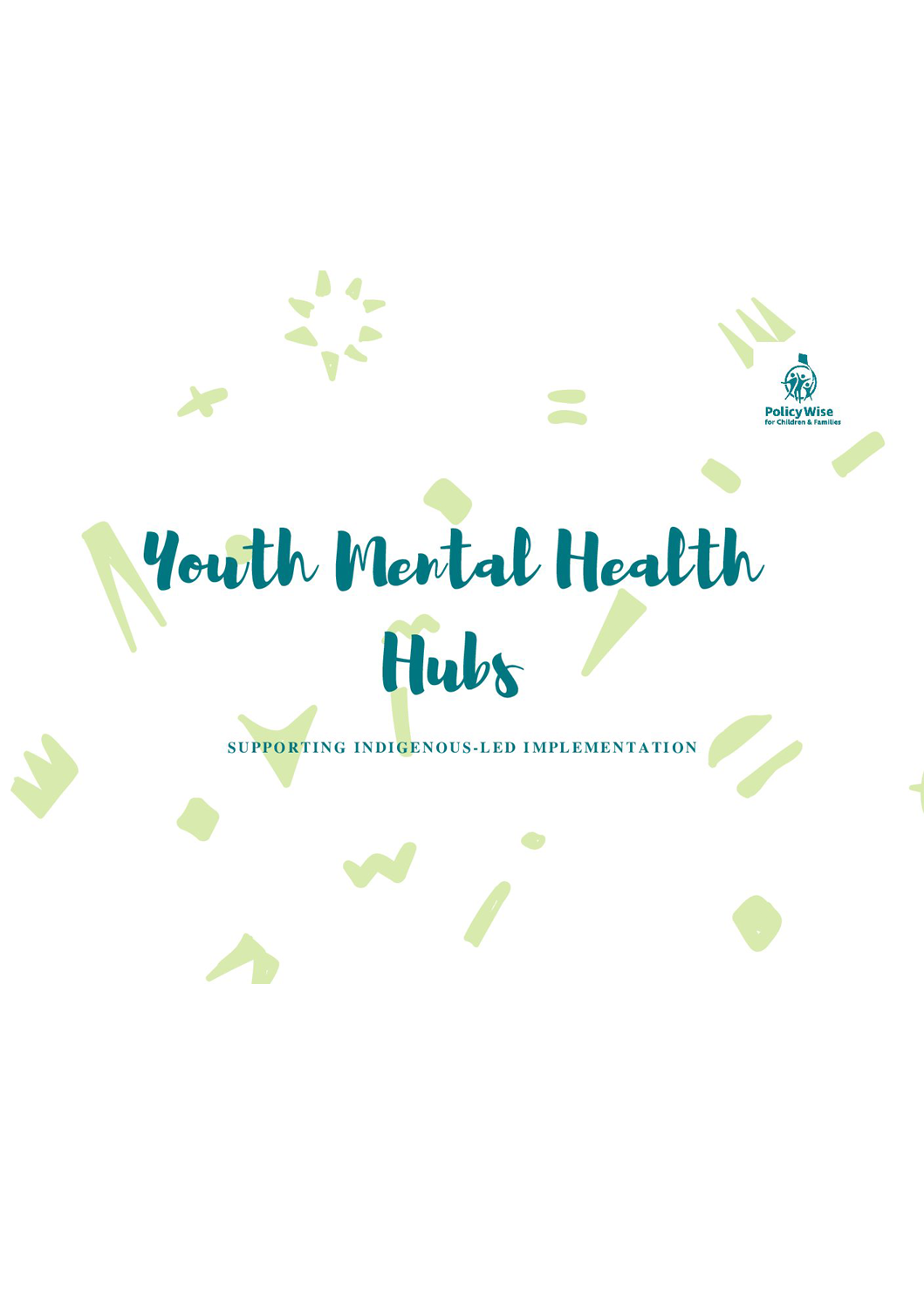
Indigenous Journey Map
The Indigenous Journey Map highlights lessons learns and tips for Indigenous-led implementation.
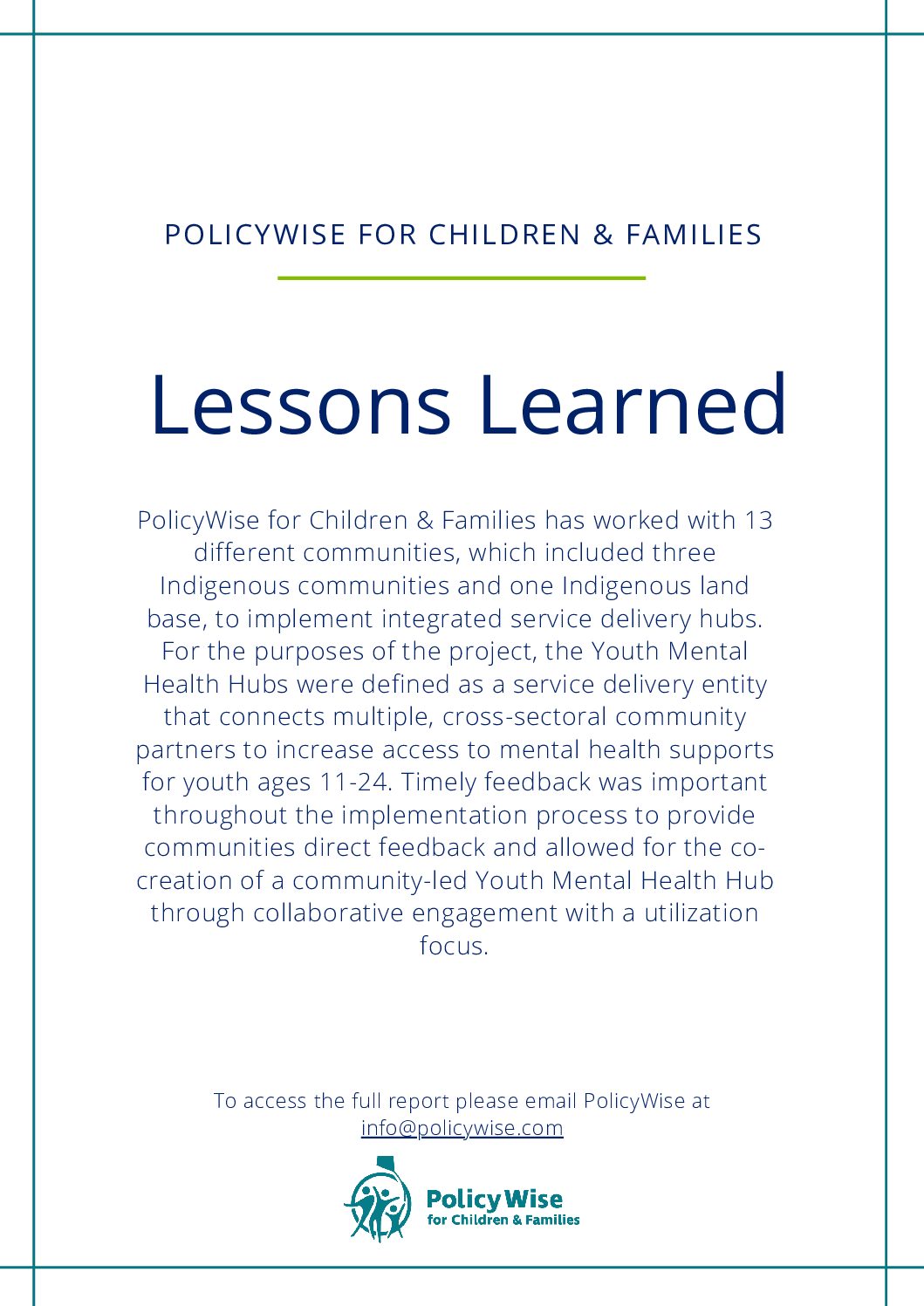
Lessons Learned from 13 Communities
We’ve also summarized the lessons we’ve learned from all of our community partners.
Where Are the Hubs Located?
The Hubs are taking place in small, medium, rural, and remote communities. Indigenous communities and land bases are also involved. Since 2017, we have collaborated with 13 different communities from across Alberta. These have included communities within Treaty 6, 7, and 8 territories. We acknowledge the many First Nations, Métis, and Inuit whose footsteps have marked these lands for generations.
The 11 communities currently participating in the integrated service delivery hubs project are:
- Alexis Nakota Sioux Nation
- Bonnyville
- Drayton Valley
- Enoch Cree Nation
- Fort McMurray
- Fort Saskatchewan
- Grande Prairie
- Medicine Hat
- Rural Municipality of Wood Buffalo
- Samson Cree Nation
- Strathmore
- Tri-Region (Spruce Grove, Stony Plain, Parkland County)
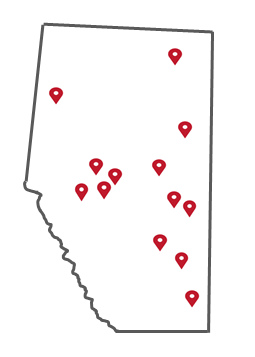
Who Has Been Involved in the Hubs?
The Hubs are community-led and youth-engaged. They target the needs, resources, and preferences of the local youth – including Indigenous and non-Indigenous youth.
We are partnered with the Canadian Mental Health Association Alberta Division on the Hubs initiatives. It has also been our privilege to work alongside and learn from Elders, youth, families, and organizations who have contributed their wisdom, experience, and perspectives to this project. Elders, knowledge keepers, and cultural brokers have played a unique role in the initiative through ceremony, spiritual guidance, and consultation. We are grateful for their role modeling of traditional practices and for their commitment to building bridges through shared knowledge.

